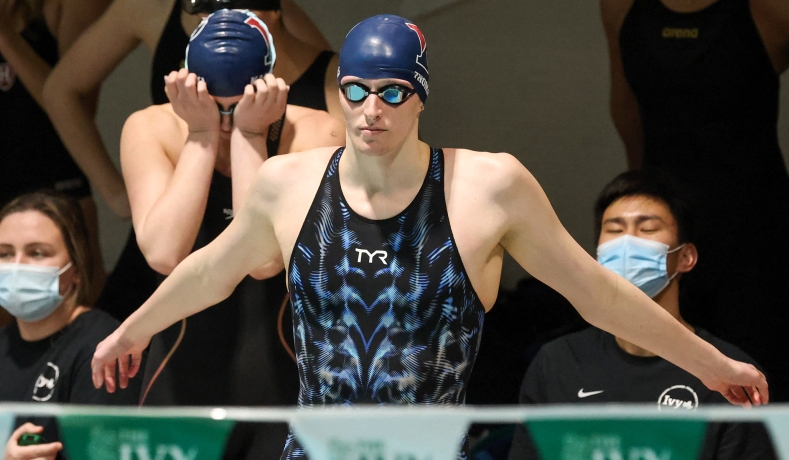

The Biology of Sex
Yes, folks, it’s March, and you know what that means- March Madness!! There’s nothing better than filling out your bracket each year with a vague sense of unfounded optimism only to watch the whole thing blow up in your face with each and every closely-contested buzzer-beater like the dynamite-filled birthday cake Jerry would give Tom each year. But now imagine for a moment if we let your local Middle School team into the tournament. Ok, for a few minutes that shit would be downright hilarious as 6’10” men dunked mercilessly over hapless adolescents cowering in their shorts, just hoping that they don’t wet themselves in front of their parents. But soon, we would recognize that this wasn’t a fair competition whatsoever and start to feel bad for the poor Middle Schoolers forced to compete against athletes that were taller and physically stronger due to their more advanced age. Suddenly, we would shout out at the college hoopsters that this wasn’t fair and yell at them to take it easy on the younger kids, telling them to compete against someone their own size. Our hearts would go out to the Middle Schoolers who had no ability to compete against athletes who were simply bigger and stronger than them. And that’s just the perspective we need to arrive at when it comes to addressing transgender athletes.
Now, I want to start this column by first stressing that I support and embrace every single aspect of transgender identification. I intentionally use the word “embrace” here because this shouldn’t be about mere tolerance. Tolerance is pure, unadulterated bullshit. We should openly embrace each and every human being for exactly who they are, and gender identification is a vital aspect of their being. Sure, people are born with a particular body and corresponding genitals, but our gender identity is more than just our bodies. So much of our comprehension of our gender revolves around our mental, spiritual, and emotional understandings about who we are. I can see the physical aspects of someone’s gender, but only THEY know who they are on the inside. And so I will always respect and honor every individual’s right to declare who they are and how they identify their gender.

But even though we should all value their internal search for gender identity, that does not change the external bodies which they were given at birth. To suggest otherwise is a refutation of science and biological fact. Yes, I know there are exceptions to the rule. Of course there are. And there are also Middle School kids that are both taller and stronger than me. Ok, given my height and weight, that might not be much of an example, but you get my point: Just as teenagers tend to get taller and stronger as they go through adolescence, so too do men have a tendency to be bigger and stronger than women. On average, men are 5 inches, or 7%, taller than women. The average American male outweighs women by nearly 30 pounds. And studies suggest that the skeletal muscle mass index is 36% higher for men than women, with men generally having a clear advantage in upper body strength and women tending to demonstrate more strength in their lower bodies. This is not political or social narrative. This is in no way a denial of who someone identifies as or who they are at their core. It is simply biological fact.
This is the whole reason for having men’s and women’s sports in the first place, a point I will revisit at the end of this piece. As a society, we have long understood that the physical advantages men have in some areas can lead to greater capacity for sports that favor size and upper body strength. This is not true for all athletic competitions, and there are many sports (rock climbing and skiing, for example) that favor women’s body types. But in many sports such as basketball or swimming, men have a clear competitive advantage over women, and their head-to-head competitions and results demonstrate just that. While broader social issues certainly factor into this and Title IX has not done enough to level the playing field for women’s athletics, we have always had a tacit understanding of this and thus separated men’s and women’s sports.
Now hormone therapy for transgender individuals also plays a factor in all of this, but when it comes to the definition of body types, height, and body mass, most of that has already been set into motion for the individual long before medical science interjects itself into the process. By the time most transgender individuals begin hormone therapy, they are well into their adolescence and have developed the body they will have for a lifetime. In fact, a new study by the Department of Laboratory Medicine shows that transgender women do not lose any of their body mass index despite inhibited testosterone production. In other words, who they are emotionally and mentally may change, how they identify may change, what they want for themselves may change. But their bodies generally stay the same. Well, you know, for the most part….
Which brings me, of course, to the recent case of transgender swimmer Lia Thomas. An all-state swimmer in high school in Texas, Thomas earned an athletic scholarship to compete as a man at the University of Pennsylvania. But then in 2019, Thomas came out as transgender and was allowed to compete in women’s swimming competitions. Thomas has smashed several Penn records this season with one teammate finishing second a full 38 seconds behind her. And that’s where this whole thing gets messy.
Of course we should all cheer Thomas’s courageous decision to come out as transgender and fully embrace her identity as a woman. If Lia has searched inside of herself and finds herself to be a woman, all of us should openly support her decision. But Thomas’s change of gender identity did not change the body she brought to her competitions and letting her compete against women does not have implications merely for her. Think of all the women who have trained tirelessly with ambitions of their own, all to get to the pinnacle of their dreams and have them dashed by competing against someone who was given a physical advantage over them at birth. Yes, we should celebrate Lia Thomas’s transformation, but not at the expense of other women whose stories are equally important. In a letter to the University of Pennsylvania and the Ivy League, 16 of Lia’s teammates asked that she be barred from women’s competitions, saying that while they supported her gender identity, “the biology of sex is a separate issue from someone’s gender identity” in sport.
After all, if we are going to suggest that the body we are born with does not, as biological research tells us it does, impart certain physical attributes, why distinguish between men’s and women’s sports at all? If birth gender does not provide particular physical advantages to each men and women, why not just have men and women compete against each other directly in all sports? I do not ask this rhetorically, but I do think I know the answer nonetheless- because we want to ensure the competitive balance for women’s sports, to make sure that they do not have to feel like the Middle School basketball team going up against college athletes. But if we allow transgender women who still retain many of the physical attributes of being born a man to compete in women’s athletics, isn’t that what we are inevitably doing- depriving female athletes of the right to compete in a fair and balanced environment? In our understandable desire to protect and fight for the rights of one courageous soul, aren’t we taking away the rights of many, many more?
Steven Craig is the author of the best-selling novel WAITING FOR TODAY, as well as numerous published poems, short stories, and dramatic works. Read his blog TRUTH: In 1000 Words or Less every THURSDAY at www.waitingfortoday.com






